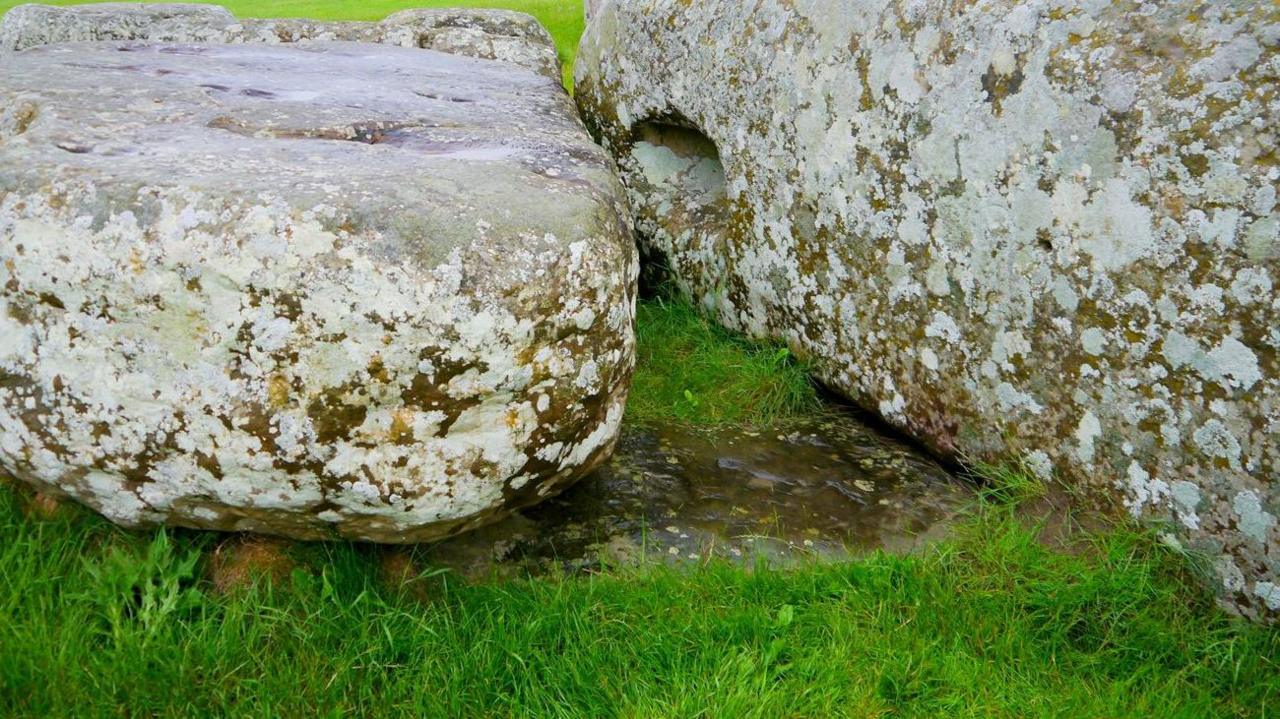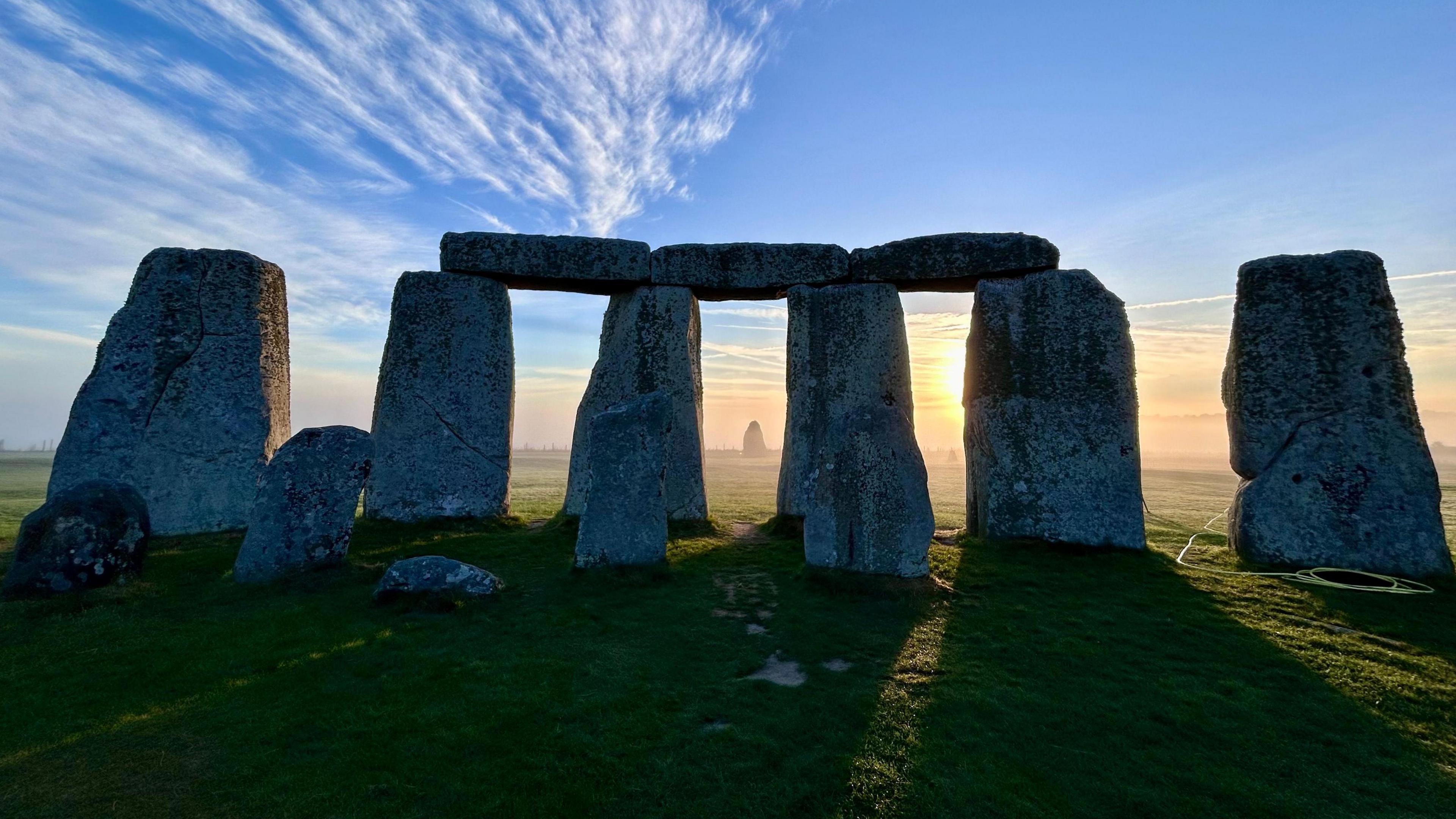Stonehenge Altar Stone not from Orkney

The Altar Stone is now mostly submerged
- Published
The quest for the origins of Stonehenge's six-tonne Altar Stone continues as new research has found it did not come from mainland Orkney.
Last month it was revealed the iconic stone came from north-east Scotland and not Wales, like the monument's bluestones do.
Orkney has its famous Neolithic sites with standing stones, like the Ring of Brodgar and Stones of Stenness.
While the Altar Stone seems similar to these, the study shows they are not from the same place, which means the hunt continues.
'Changing our thinking'
The research was published in the Journal of Archaeological Science.
Prof Richard Bevins from Aberystwyth University, the lead author of the study, said: “This research is radically changing our thinking about the origins of the Altar Stone. It’s thrilling to know that our chemical analysis and dating work is slowly unlocking this great mystery."
He has been investigating Stonehenge for the last 15 years and explained: “It lies in an unusual position at the monument, occupying a near central location and not within either the bluestone Circle or the bluestone Horseshoe."
"It is also grey-green sandstone, unlike all the other bluestone rock types," he added.
The area this type of stone comes from is called the Orcadian Basin in Scotland.
Prof Bevins and his colleagues will continue to try and "pin down" where exactly the rock came from.
It is unclear when the Altar Stone came to Stonehenge, but construction of the monument started around 5,000 years ago with changes over 2,000 years.
It adds to the findings previously published in the journal Nature, that the Altar Stone came from north-east Scotland.
Get in touch
Tell us which stories we should cover in Wiltshire
Follow BBC Wiltshire on Facebook, external, X, external and Instagram, external. Send your story ideas to us on email or via WhatsApp on 0800 313 4630.
- Published14 August 2024
